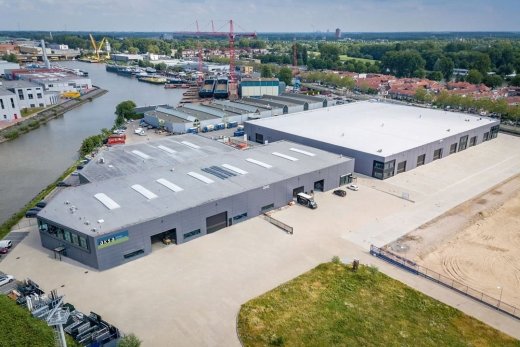Avoid underpowered tools and costly downtime with the right generator sizing strategy.
When it comes to powering a construction site, choosing the right generator size is not just a technical decision – it’s a critical part of ensuring safety, productivity, and cost-efficiency. An undersized generator may lead to equipment failure and power interruptions, while an oversized one can increase fuel consumption and upfront costs.
In this guide, Power Genset NL walks you through the key steps to correctly size a generator for your construction site – from calculating total load to considering site-specific conditions.
Why Generator Sizing Matters on Construction Sites
Construction equipment often requires high starting currents, variable loads, and reliable power under tough conditions. Choosing the wrong generator can lead to:
- Frequent tripping or voltage drops
- Overheating of tools or machinery
- Fuel inefficiency and wasted resources
- Delays in project timelines
Proper sizing ensures that every machine runs efficiently, with enough reserve capacity for future equipment or load fluctuations.
Step 1: List All Equipment and Power Requirements
Begin by identifying every piece of equipment that will be powered by the generator. This may include:
- Electric hand tools (drills, saws, grinders)
- Tower cranes
- Concrete mixers and vibrators
- Welding machines
- HVAC units for temporary offices
- Lighting towers
- Water pumps
Make note of each item’s running watts and starting watts. Starting (or surge) power is especially important, as many tools draw significantly more power when starting up.
Step 2: Calculate Total Load in kW or kVA
Once you have the list of equipment, calculate the total power requirement:
- Add all running watts to determine continuous load
- Identify the highest starting wattage among tools that may start simultaneously
- Convert watts to kilowatts (kW) by dividing by 1,000
If your tools run on three-phase power (common in construction), use kilovolt-amperes (kVA) instead of kW and apply an appropriate power factor (typically 0.8).
Example:
- Continuous load: 22,000W = 22 kW
- Peak surge requirement: 6,000W
- Total = 28 kW = approx. 35 kVA (with 0.8 power factor)
Step 3: Apply a Safety Margin
Always build in a safety buffer of 10–25% above your maximum expected load. This accounts for:
- Unexpected load increases
- Simultaneous equipment startup
- Minor voltage fluctuations
Power Genset NL Tip: A well-sized generator should operate at 70-90% load during typical use. This prevents both overloading and underloading, which can damage the generator over time.
Step 4: Consider Load Type and Duty Cycle
Construction sites may include both resistive loads (lighting, heaters) and inductive loads (motors, compressors, cranes). Inductive loads cause temporary spikes in power draw when starting and require more headroom in generator capacity.
You should also factor in the duty cycle – how long and how often the generator will run each day. For heavy usage (8+ hours/day), choose a generator rated for prime power or continuous use rather than standby.
Step 5: Factor in Site Conditions and Mobility
Don’t forget the physical and environmental conditions of your site:
- Ambient temperature and altitude can reduce generator efficiency
- Space constraints may require compact or containerized models
- Mobility needs may call for trailer-mounted units
- Noise restrictions in urban areas may require soundproofed models
Step 6: Choose the Right Fuel Type
While gasoline and LPG generators exist, diesel generators are preferred on construction sites due to:
- Higher energy density and fuel efficiency
- Better durability in harsh environments
- Easier fuel logistics for large-scale use
Stage V diesel generators are also a great choice to meet EU emission standards without sacrificing power.
Step 7: Consult with an Expert
Even with all the right calculations, professional input can make a difference. An experienced provider like Power Genset NL can help you:
- Validate your power requirements
- Recommend models based on load profile and usage
- Ensure compliance with safety and environmental regulations
- Provide installation, transport, and support services
Keep in mind that generator requirements can vary based on location-specific factors such as grid availability and reliability.
Final Thoughts
Sizing a generator for a construction site is about more than just matching watts – it’s about understanding your site’s needs, anticipating future demands, and ensuring every tool and machine can perform at its best.
At Power Genset NL, we offer a wide range of high-performance diesel generators specifically designed for construction and infrastructure projects. Whether you need a mobile 40 kVA unit or a fully integrated 200 kVA system, our team is here to help.
Contact us at sales@powergenset.nl to get a custom recommendation and keep your project powered, efficient, and on track.

